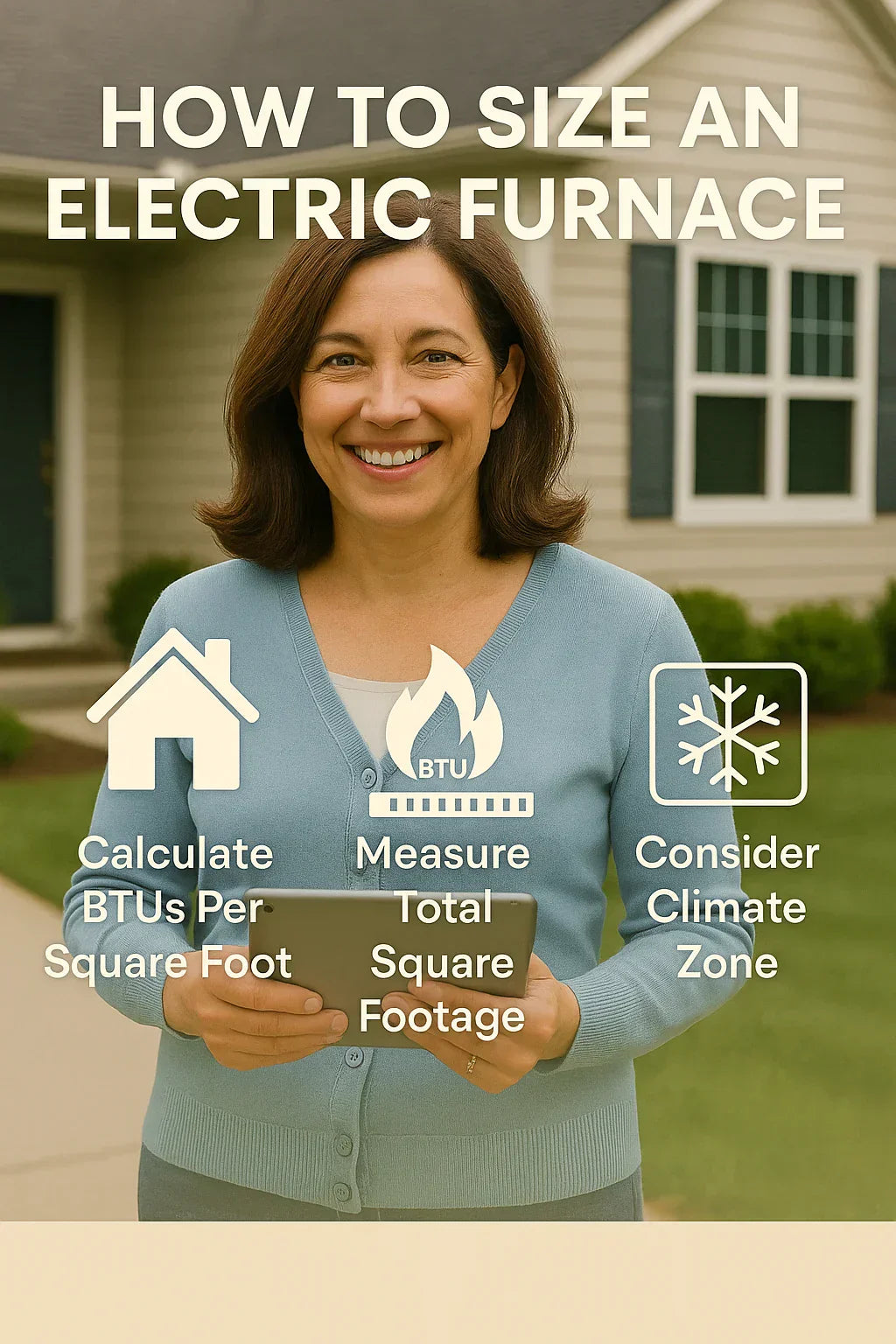🏠 Why Proper Sizing Matters for Your Electric Furnace
An oversized electric furnace can short cycle, increasing wear and energy waste. An undersized furnace struggles to heat your home, raising electric bills and reducing comfort. Correct sizing ensures your investment provides reliable, efficient heating for years.
❄️ What Factors Affect Electric Furnace Sizing?
-
Square Footage: The larger the home, the higher the BTU output needed.
-
Insulation Quality: Poor insulation increases heating demand.
-
Ceiling Height: Higher ceilings increase heating volume.
-
Climate Zone: Cold climates require more BTUs per square foot.
-
Window Quality: Older, drafty windows increase heating load.
🔥 What Is BTU and Why Does It Matter?
BTU (British Thermal Unit) measures the energy needed to raise the temperature of one pound of water by one degree Fahrenheit. In HVAC, BTU rating determines heating capacity.
Example: A 50,000 BTU furnace can handle the heating needs of a small-to-medium home in a mild climate.
🗺️ Recommended BTUs Per Square Foot by Climate
| Climate | BTUs per Square Foot |
|---|---|
| Hot (South FL, AZ) | 25-30 |
| Mild (CA, TN, NC) | 30-40 |
| Cold (MN, MI, ME) | 40-50 |
| Very Cold (ND, MT) | 50-60 |
Example: A 1,500 sq. ft. home in North Carolina (mild climate) would need: 1,500 sq. ft. x 35 BTUs/sq. ft. = 52,500 BTUs.
🛠️ Using Manual J Calculations
Manual J is an industry-standard calculation used by HVAC professionals to precisely size your system. It considers:
-
Floor area and ceiling height
-
Window and door types
-
Insulation R-values
-
Air leakage
-
Local climate data
-
Sun exposure
This ensures you avoid oversizing or undersizing based on guesswork.
Learn more from ACCA's Manual J guide.
💰 Sizing and Operating Cost Implications
-
An oversized furnace will use more electricity during short, inefficient cycles.
-
An undersized furnace runs continuously, leading to higher energy bills and uneven heating.
-
Proper sizing allows your furnace to reach comfortable temperatures efficiently without straining the system.
⚖️ Electric Furnace Sizing Examples
-
Small Home (800-1,000 sq. ft., mild climate): 24,000–35,000 BTUs
-
Medium Home (1,500 sq. ft., mild climate): 45,000–55,000 BTUs
-
Large Home (2,500 sq. ft., cold climate): 110,000–130,000 BTUs
🔍 Can You Size Your Furnace Yourself?
While you can use the BTUs per square foot rule as a rough estimate, professional Manual J load calculations are strongly recommended to:
-
Factor in insulation and windows
-
Account for air leakage
-
Optimize energy efficiency
You can use online BTU calculators for estimates, like this Energy Star heating calculator.
🌿 Efficiency and Sizing
Proper sizing improves energy efficiency and extends furnace lifespan. Combine correct sizing with:
-
Smart thermostats
-
Upgraded insulation
-
Sealed ductwork
-
Regular filter replacements
These practices can lower electricity use, reduce bills, and maximize comfort.
⚡ Electric Furnace Sizing vs. Heat Pump Sizing
Heat pumps require different calculations, as they are more efficient and require less electricity per BTU delivered. If you’re considering a heat pump instead, see DOE’s heat pump sizing guide.
🏡 Final Checklist Before Purchasing
✅ Know your square footage and climate zone.
✅ Assess insulation and window conditions.
✅ Consider ceiling height and layout.
✅ Decide on long-term energy goals (solar, efficiency upgrades).
✅ Request a Manual J calculation from your contractor.
🔗 Next Steps
-
Explore electric furnace options at The Furnace Outlet.
-
Book a professional assessment for Manual J sizing.
-
Check local electricity rates to forecast operating costs.
Correct sizing ensures your electric furnace investment delivers consistent comfort and maximum efficiency for years to come.
In the next topic we will read more about: Electric Furnace Installation Guide: What Homeowners Need to Know







